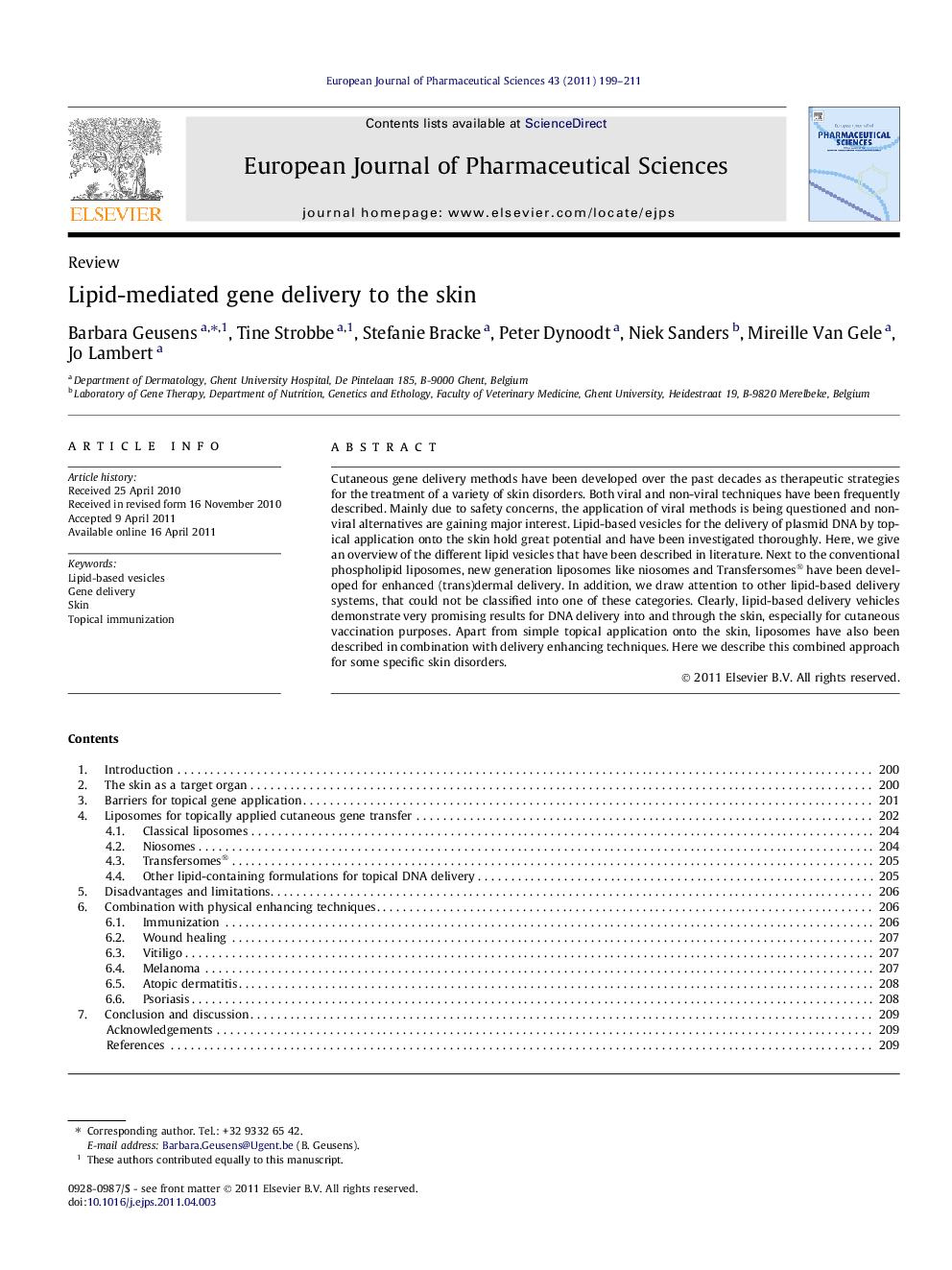| Article ID | Journal | Published Year | Pages | File Type |
|---|---|---|---|---|
| 2481627 | European Journal of Pharmaceutical Sciences | 2011 | 13 Pages |
Cutaneous gene delivery methods have been developed over the past decades as therapeutic strategies for the treatment of a variety of skin disorders. Both viral and non-viral techniques have been frequently described. Mainly due to safety concerns, the application of viral methods is being questioned and non-viral alternatives are gaining major interest. Lipid-based vesicles for the delivery of plasmid DNA by topical application onto the skin hold great potential and have been investigated thoroughly. Here, we give an overview of the different lipid vesicles that have been described in literature. Next to the conventional phospholipid liposomes, new generation liposomes like niosomes and Transfersomes® have been developed for enhanced (trans)dermal delivery. In addition, we draw attention to other lipid-based delivery systems, that could not be classified into one of these categories. Clearly, lipid-based delivery vehicles demonstrate very promising results for DNA delivery into and through the skin, especially for cutaneous vaccination purposes. Apart from simple topical application onto the skin, liposomes have also been described in combination with delivery enhancing techniques. Here we describe this combined approach for some specific skin disorders.
